RARE! WWII "SECRET" 12th Air Force 17th Bombardment Group North Africa/Mediterranean Campaign B-26 Pilot Airfield Map (DOUBLE-SIDED)*

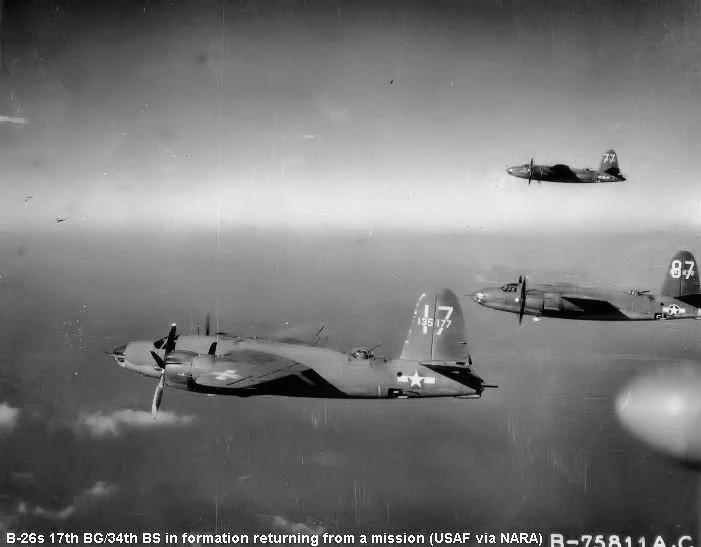
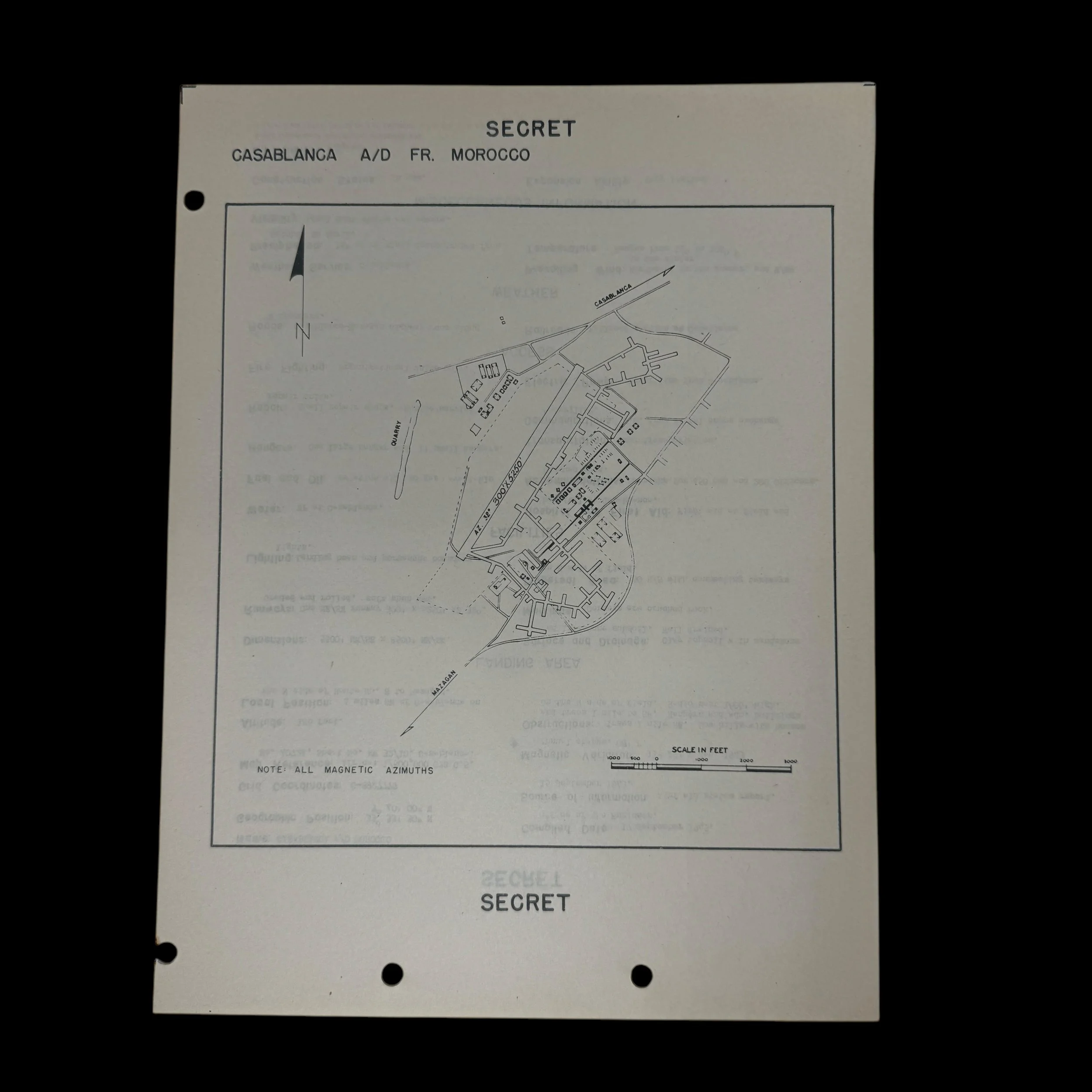

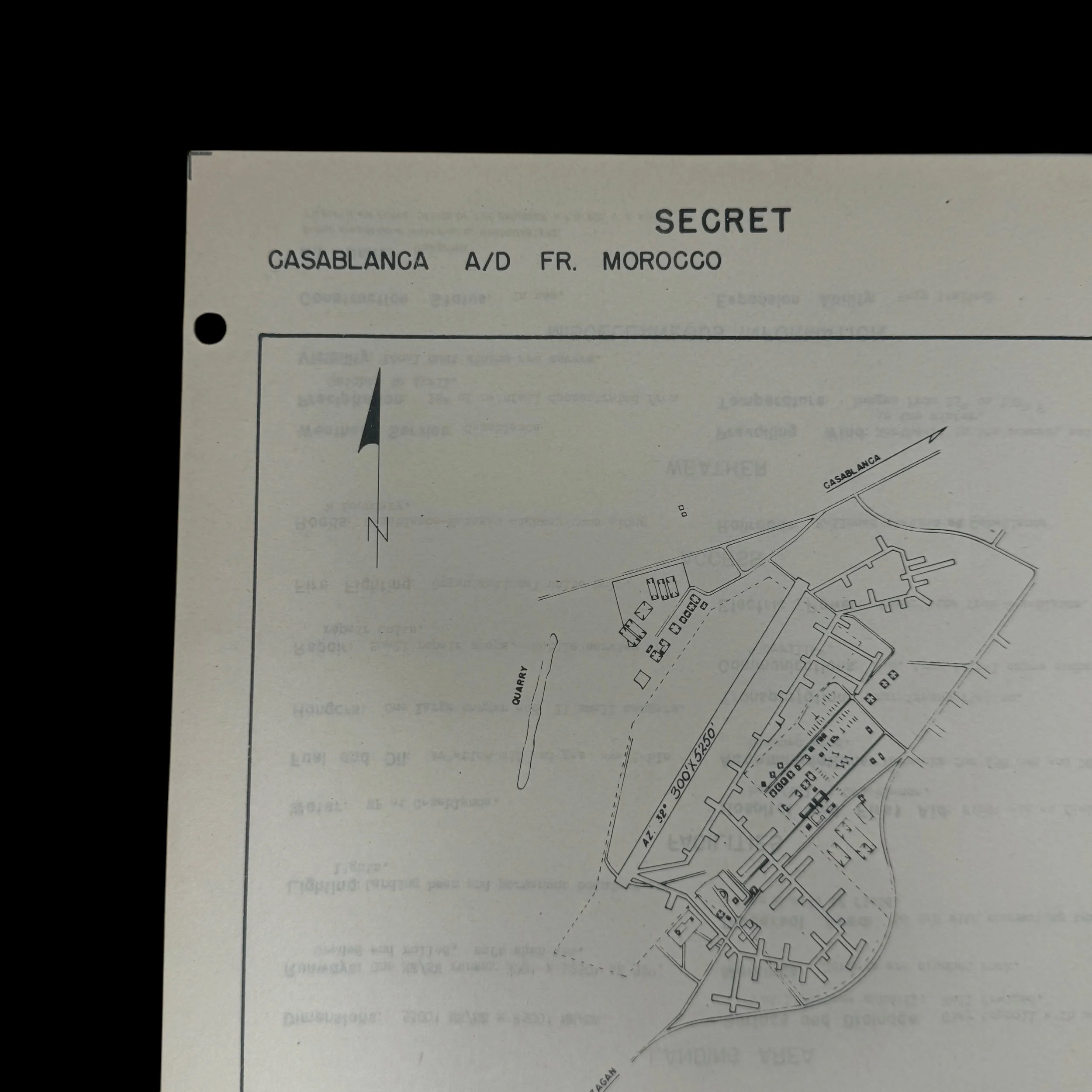
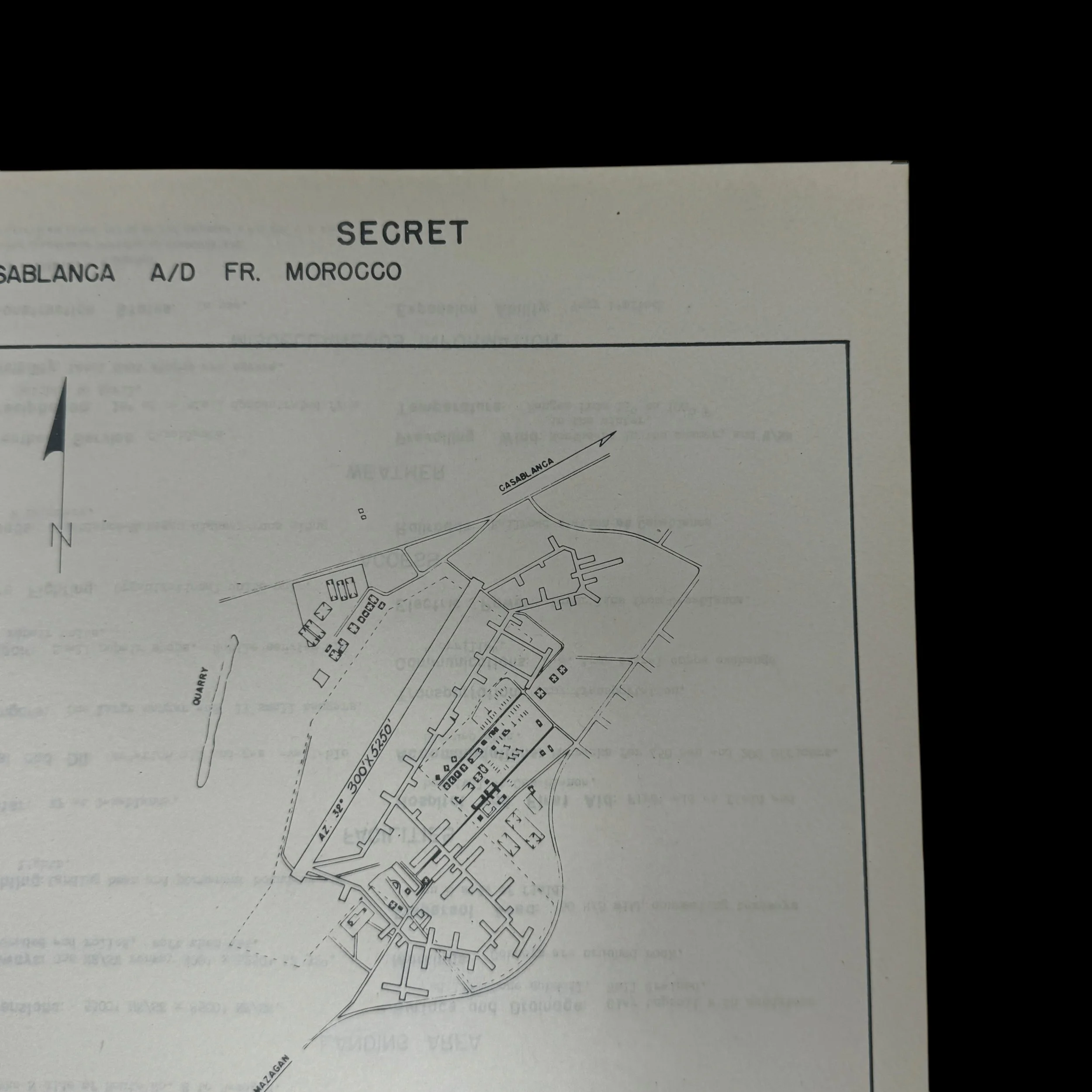

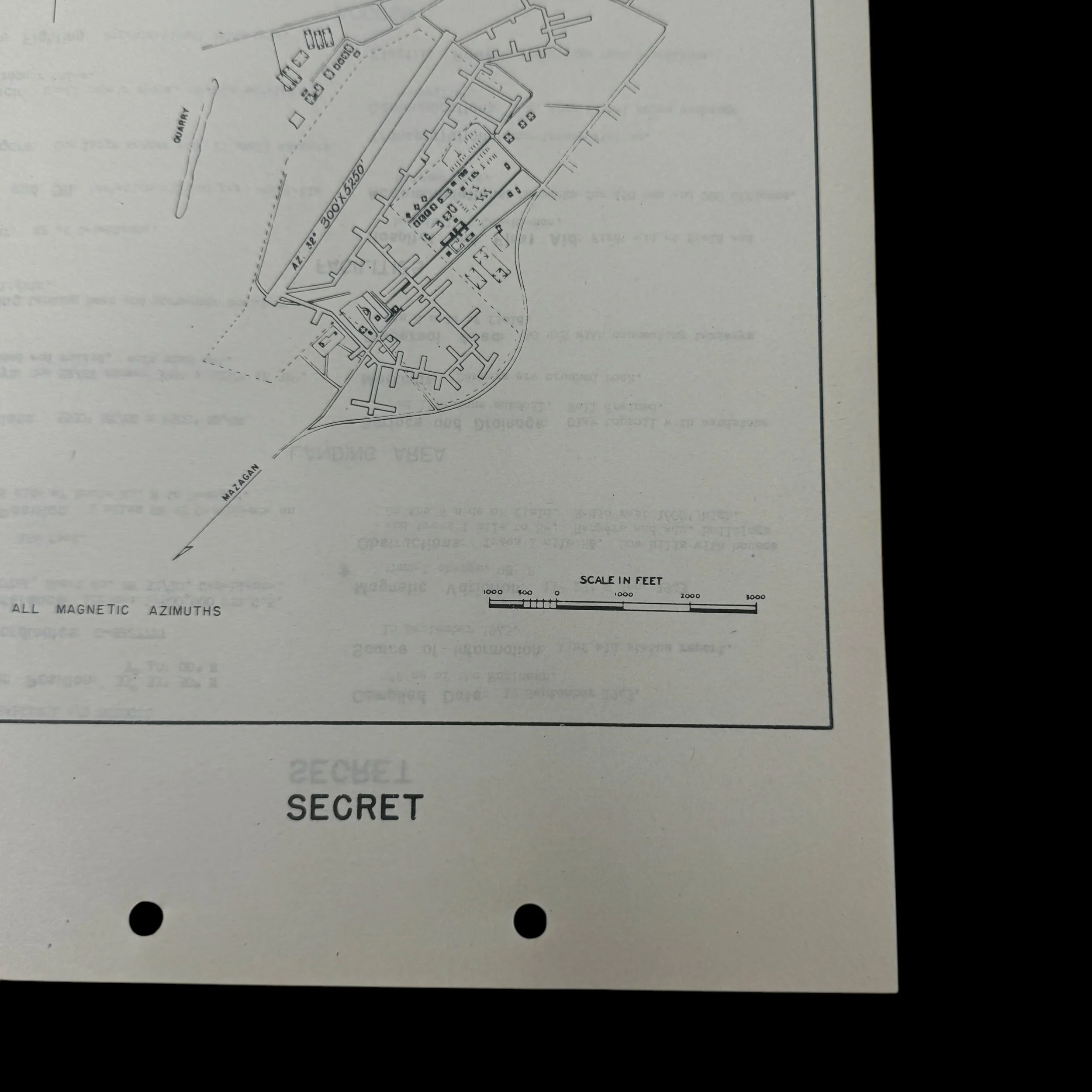
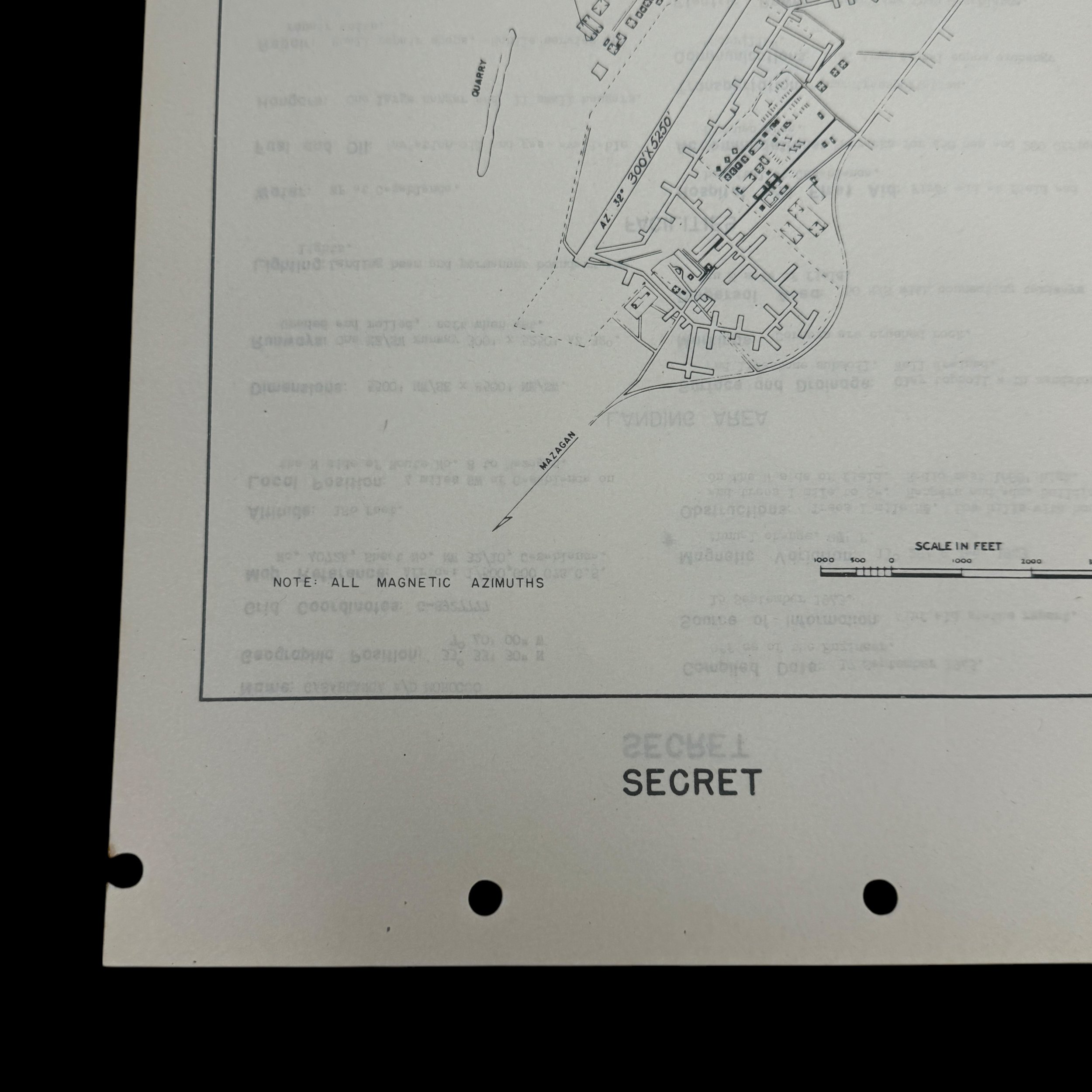
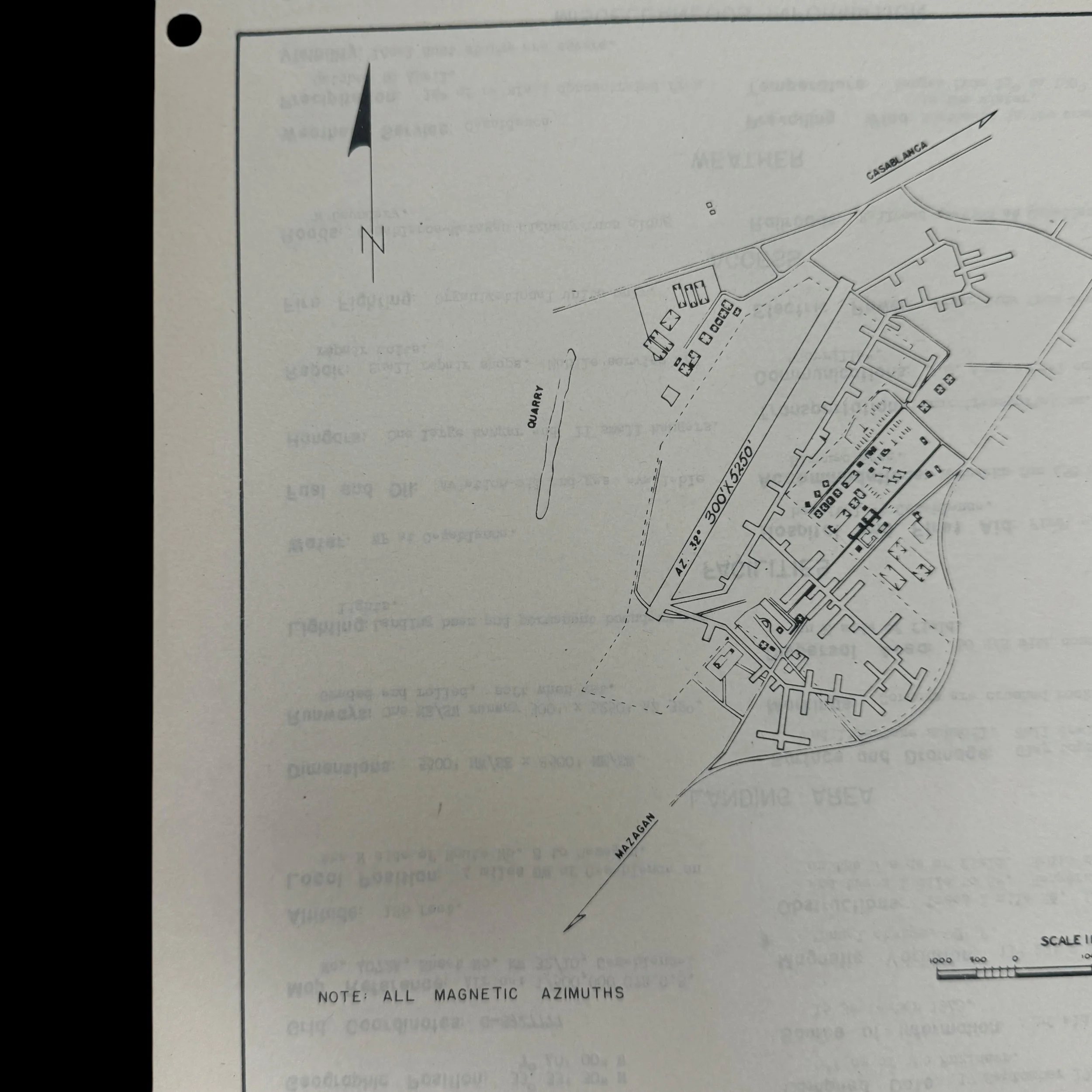
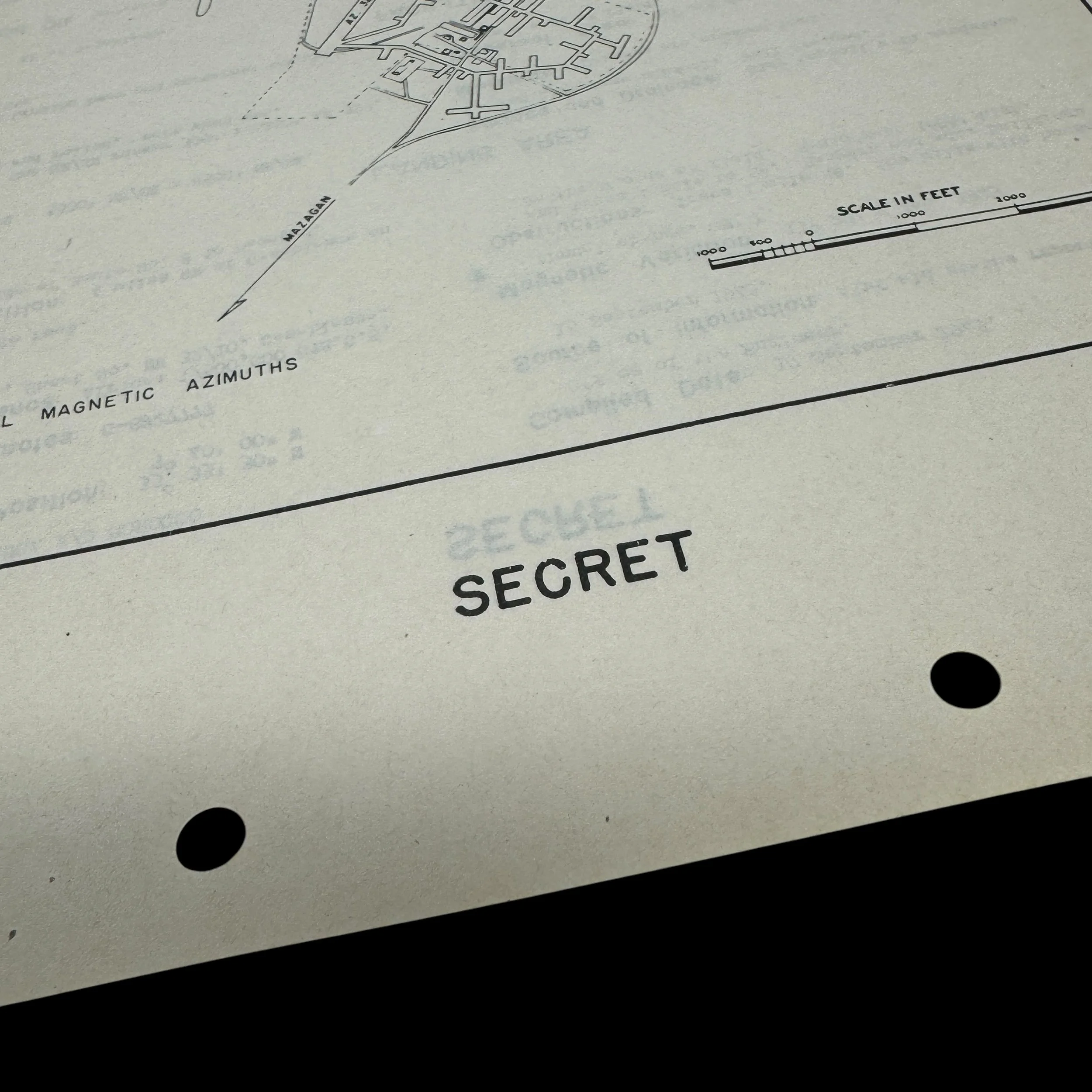




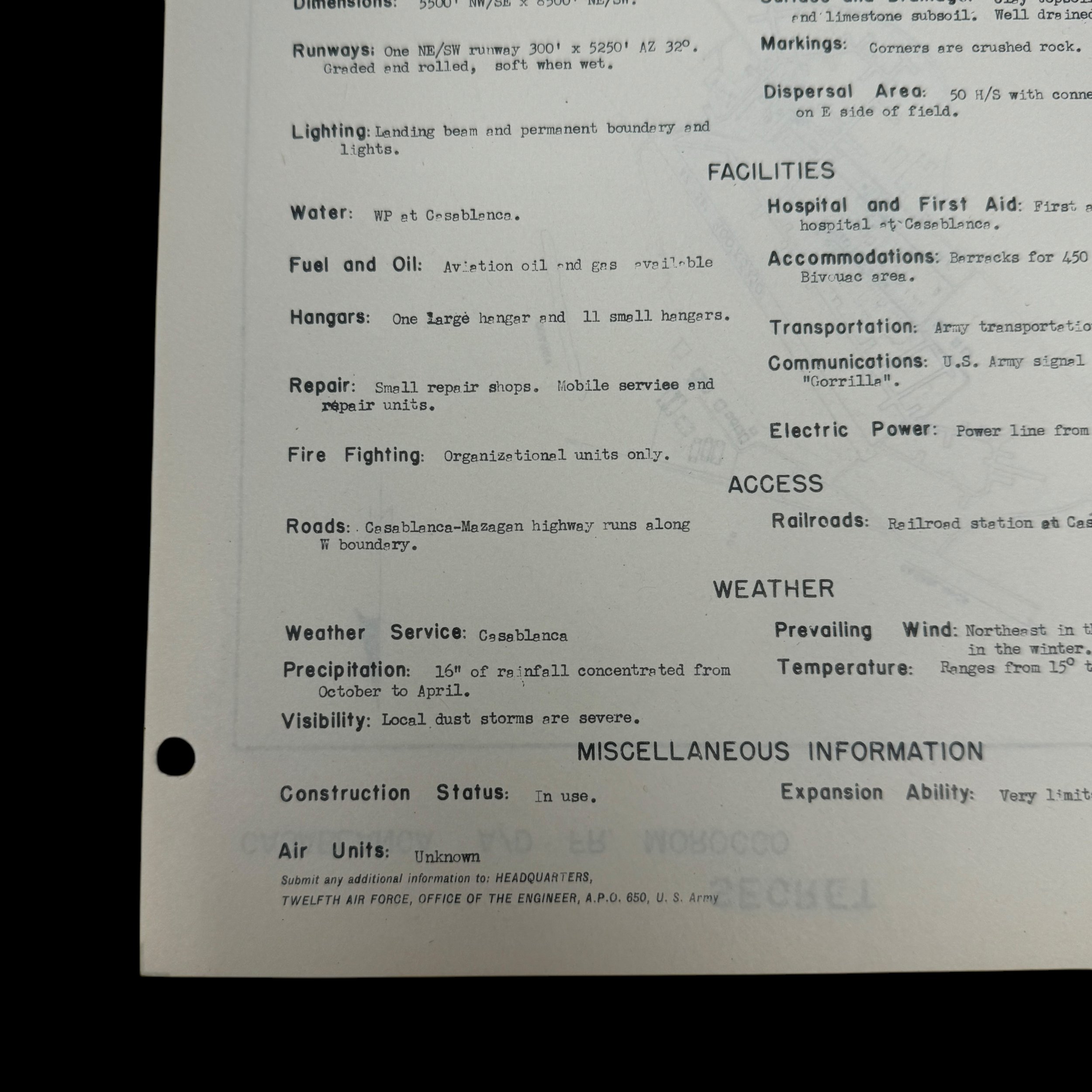

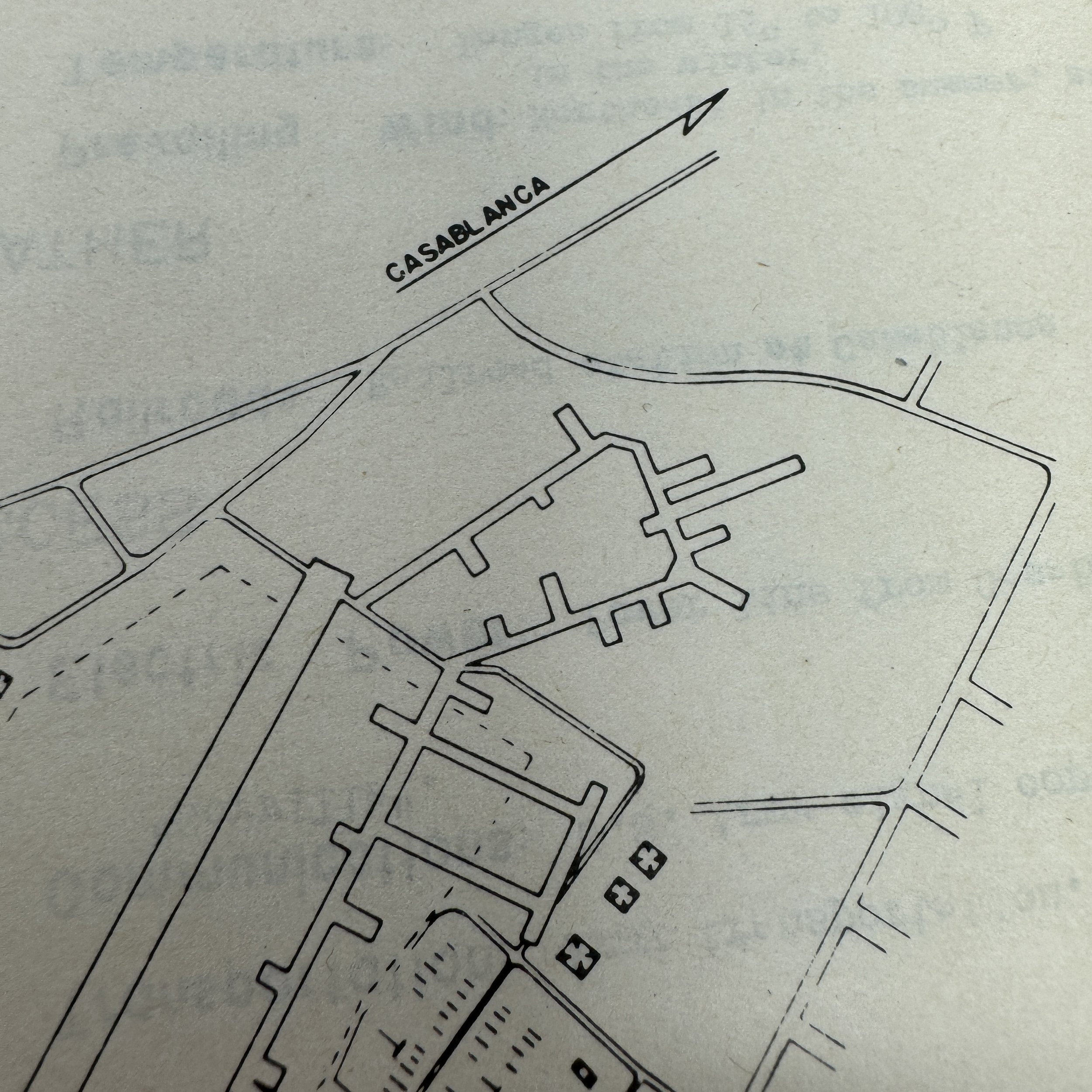

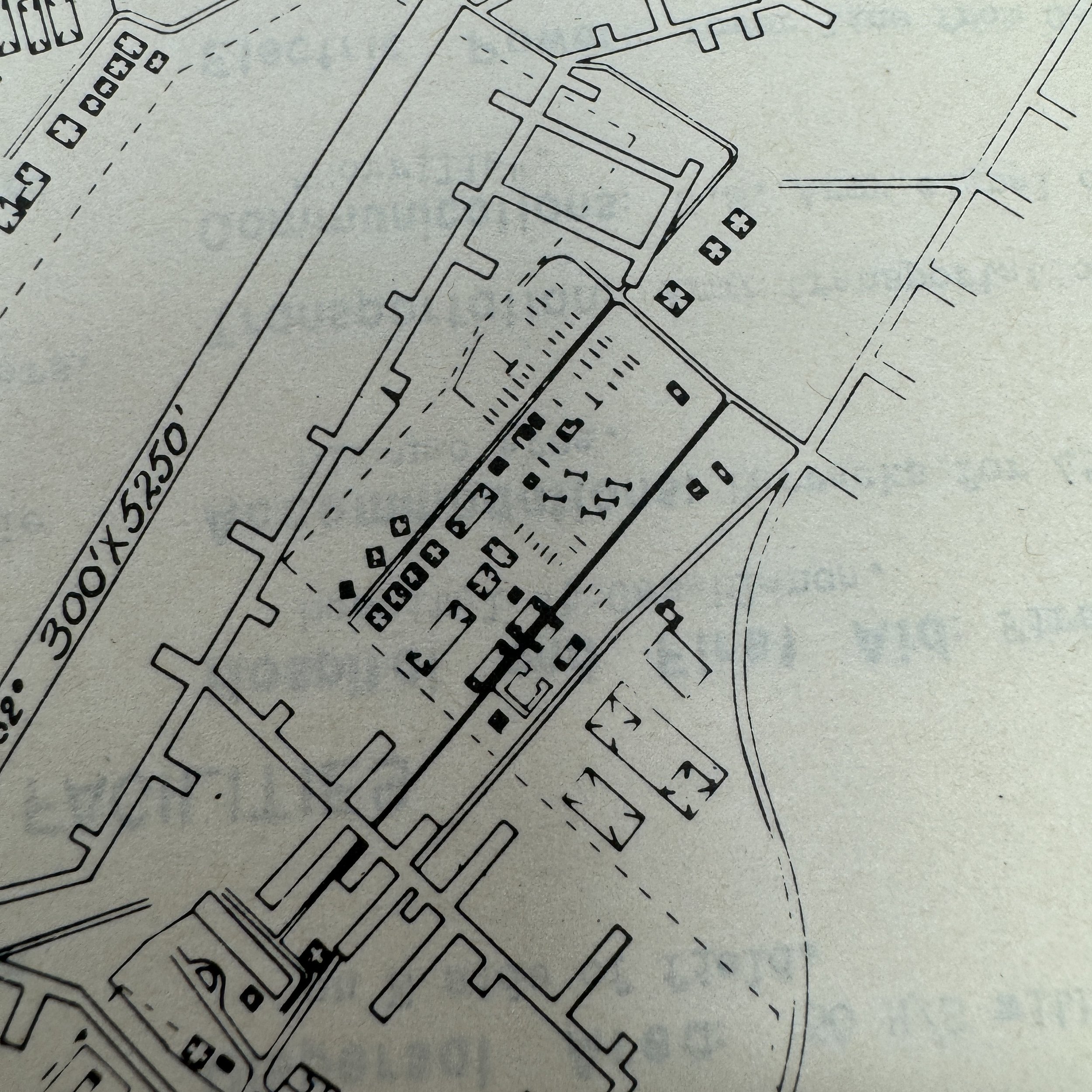
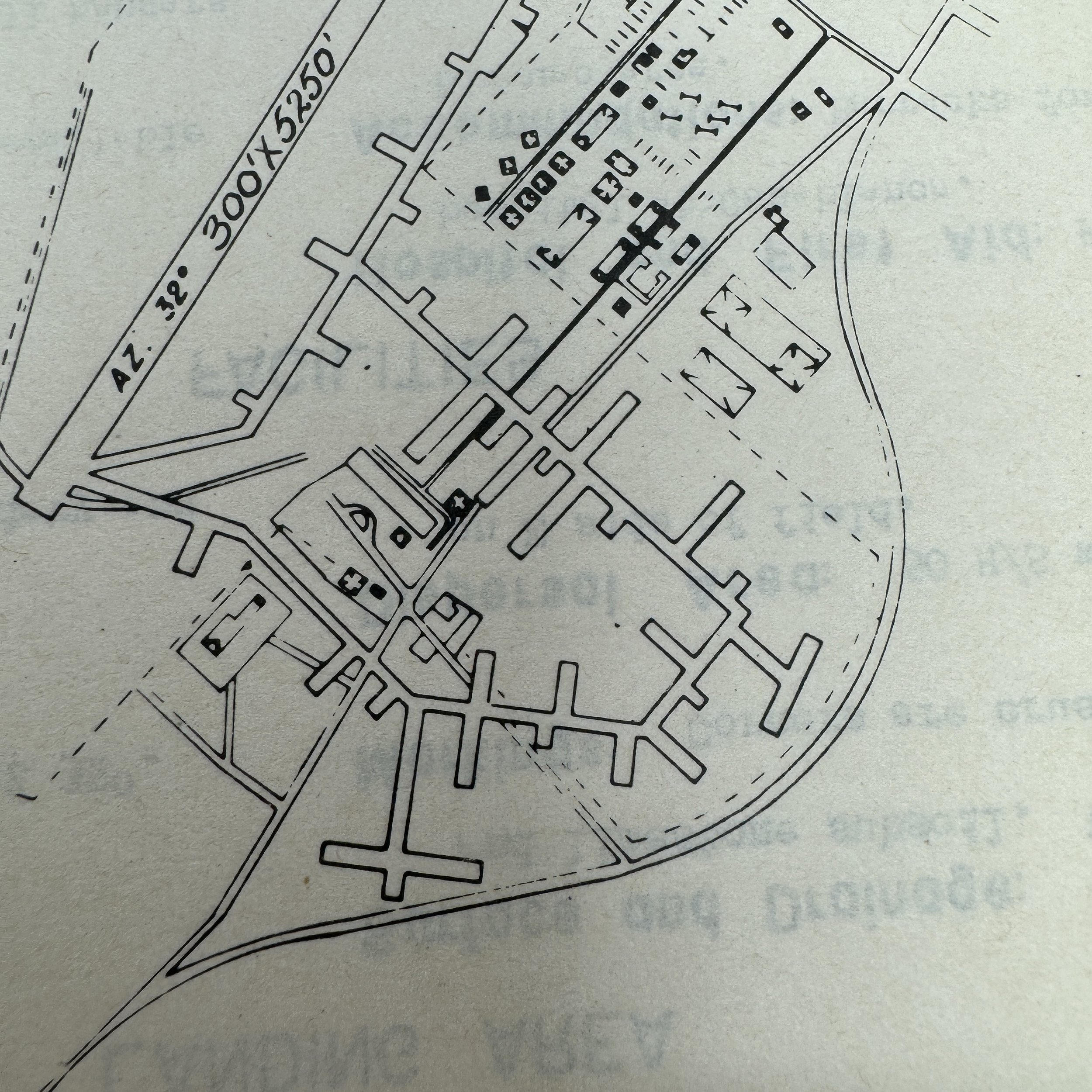

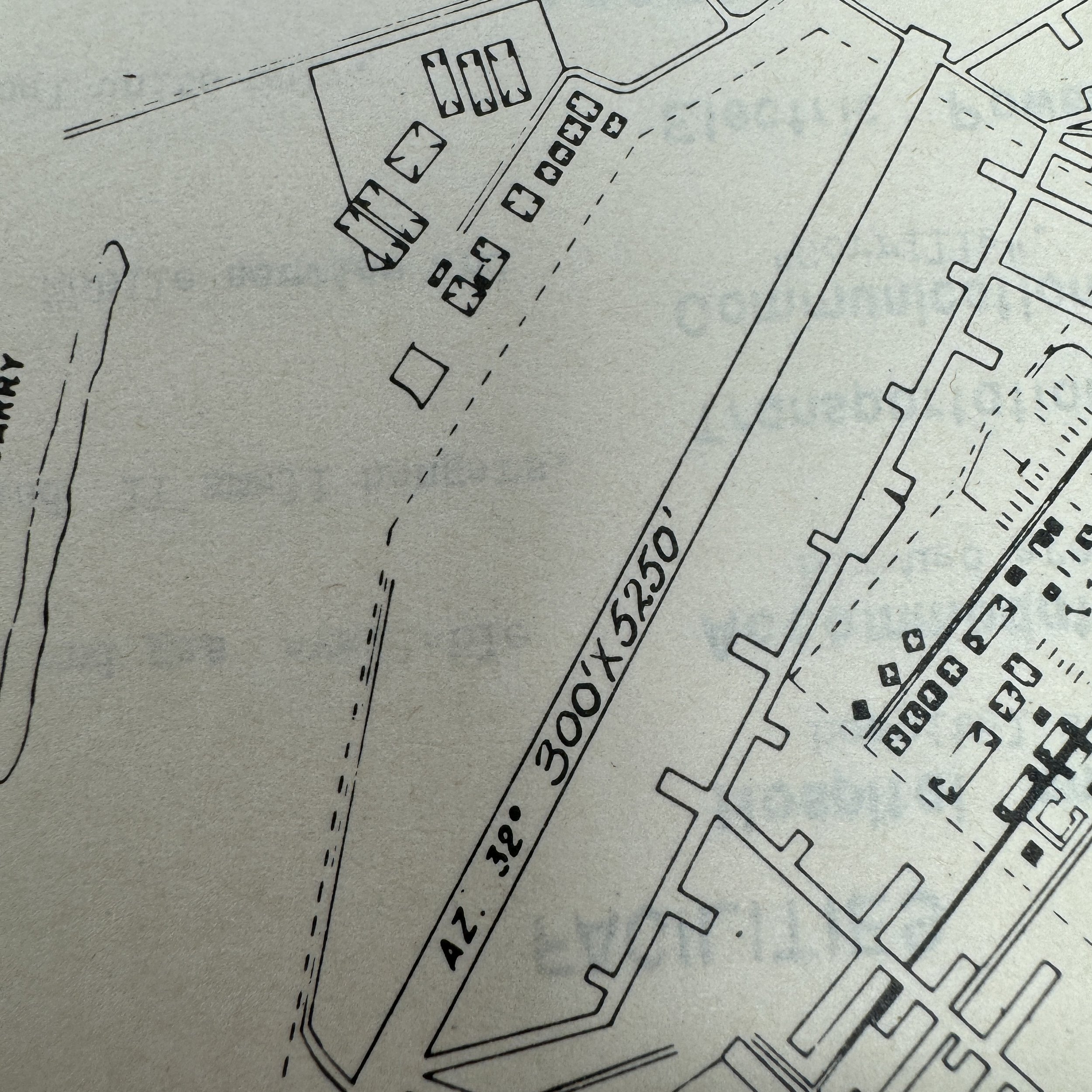
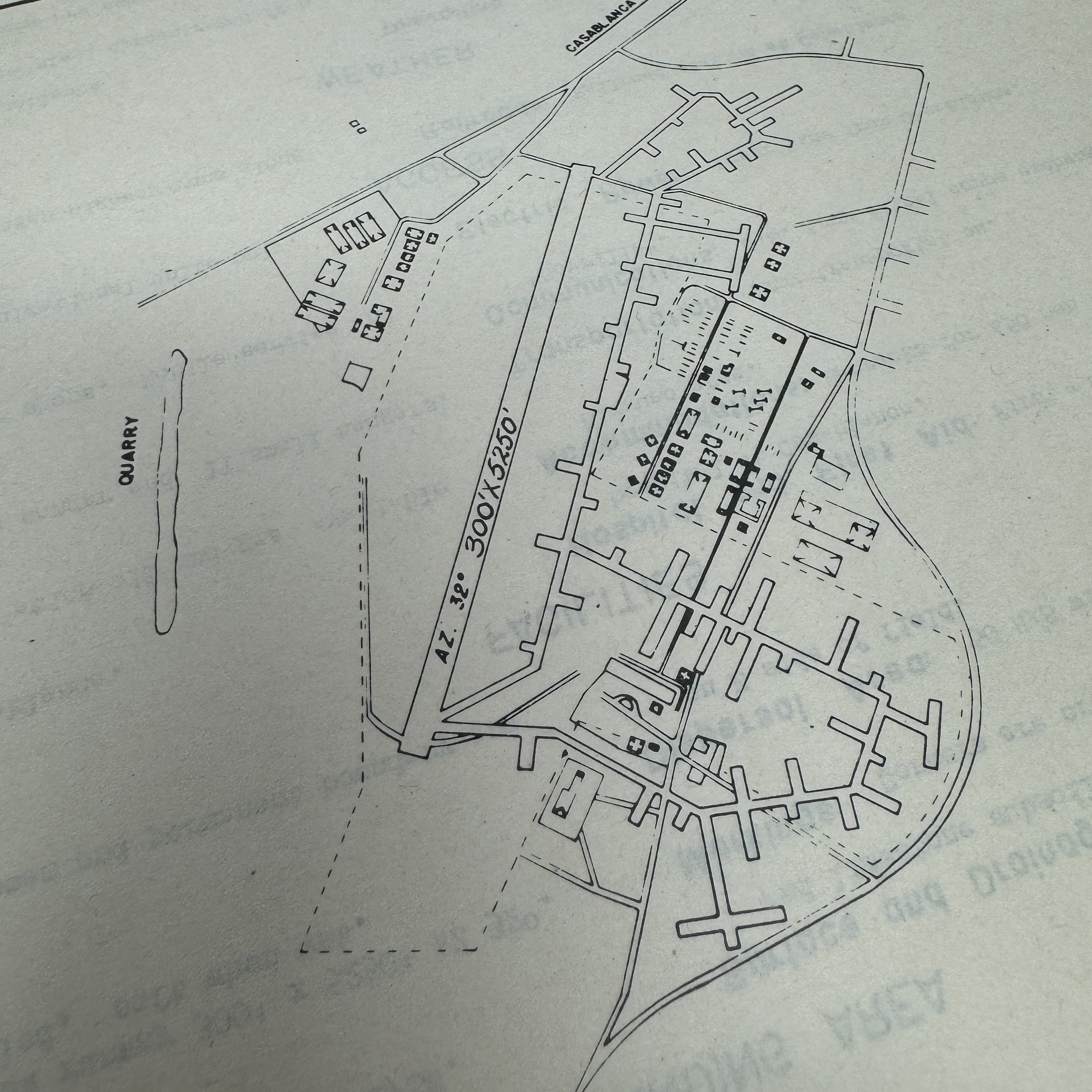
RARE! WWII "SECRET" 12th Air Force 17th Bombardment Group North Africa/Mediterranean Campaign B-26 Pilot Airfield Map (DOUBLE-SIDED)*
Comes with a hand-signed C.O.A.
Size: 8 × 10.5 inches
This exceptional and museum-grade artifact is a rare double-sided World War II U.S. Army Air Force map, marked "SECRET," showcasing a meticulously detailed view of the “CASABLANCA A/D/ FR. MOROCCO” airfield. This map was a critical tool used during the North Africa and Mediterranean campaigns and comes directly from a bring-back collection from the 17th Bombardment Group.
Historical Significance of the 17th Bombardment Group
The 17th Bombardment Group transitioned to B-26 Marauders in the summer of 1942, embarking on a pivotal role in World War II. The group was deployed to North Africa in late 1942, initiating combat operations on December 30. Their campaigns spanned across the Mediterranean theater, with assignments under both the 12th and 15th Air Forces at various stages of the war.
The 17th Bombardment Group conducted interdictory and close-support missions targeting:
Bridgesandrail linesto disrupt enemy supply chains.
Marshalling yardsto immobilize Axis troop and equipment movements.
Harbors and shipping lanes, crippling supply efforts.
Gun emplacementsandtroop concentrationsto aid advancing Allied forces.
Their efforts were instrumental in key operations:
The defeat of Axis forces in North Africa by May 1943.
The reduction of strategic islands like Pantelleria and Lampedusa in June 1943.
Participation in the invasions of Sicily (July 1943) and mainland Italy (September 1943).
A critical role in the drive toward Rome, including a Distinguished Unit Citation for their daring bombing of Rome’s airfields on January 13, 1944.
Contributions to the invasion of Southern France (August 1944) and sustained operations in Northern Italy, France, and Germany, earning the French Croix de Guerre with Palm for their exceptional efforts in Italy (April-June 1944).
Details of the Map
This “SECRET” map offers unparalleled insight into the strategic planning and operations of the Allied air campaign.
Front Side
A highly detailed representation of the Casablanca airfield, including the layout of runways, taxiways, and surrounding facilities.
Precise geographic and topographic features to assist pilots in navigation.
Back Side
The most up-to-date pilot and landing information for Allied aircraft and heavy bombers operating in the region.
Essential guidance on approach paths, runway conditions, and emergency procedures.
Importance to Pilots and Crews
For B-26 pilots, co-pilots, and navigators of the 17th Bombardment Group, this map would have been a vital tool carried in the cockpit. In a theater of war where enemy aircraft and flak regularly caused damage, access to detailed airfield maps like this could mean the difference between survival and catastrophe. Knowing the exact locations of safe landing options was crucial, especially during emergency situations.
The airfield at Casablanca served as a critical hub for Allied operations, providing support for damaged aircraft, resupplying bombers, and enabling rapid redeployment. This map embodies the strategic precision and adaptability that defined the Allied air campaign in the Mediterranean and North Africa.
This map is more than just a navigational aid—it’s a testament to the bravery and resourcefulness of the men who flew B-26 Marauders into perilous skies. It represents their commitment to the mission and their reliance on tools like this to achieve victory.
An artifact of this rarity and historical depth is not just a collector’s piece; it’s a tangible connection to the heroic legacy of the 17th Bombardment Group and the pivotal campaigns that shaped the outcome of World War II.